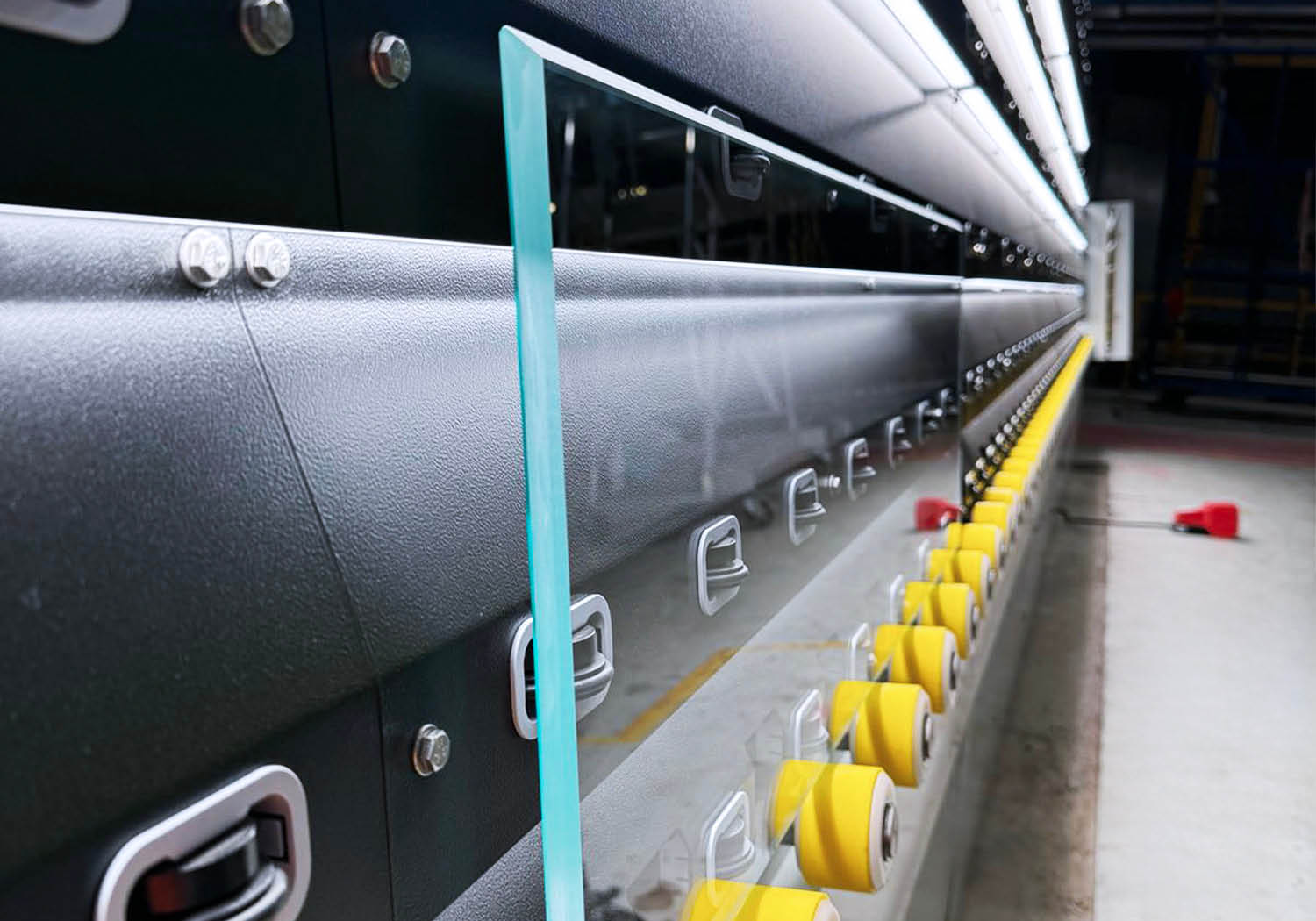New systron Feature for Architectural Glass: Edge Deletion with the systron proHD
Coated glass has become an integral part of the construction industry. Whether as a thermal insulation or sun protection layer, the functions of glass coatings are diverse. They reduce the emissivity of infrared radiation, ensure electrical conductivity, can change the refraction and translucency of light and create decorative effects. Mirroring and anti-reflective glass surfaces are also created with coatings. systron customers such as AGC Interpane Plattling, arcon Flach- und Sicherheitglas in Feuchtwangen or vandaglas Eckelt in Steyr, which specialize in the production of architectural glass, continue to set new standards in the coating of architectural glass.
systron’s Quality Management is also continuously working on optimizations and was recently able to focus on edge deletion and tested this feature very successfully. Such edge removal is not carried out with the standard proHD glass processing centre. There are new options for this machine, such as the second water cushion as a counter-holder, an additional force measuring system, and some software adaptations.





